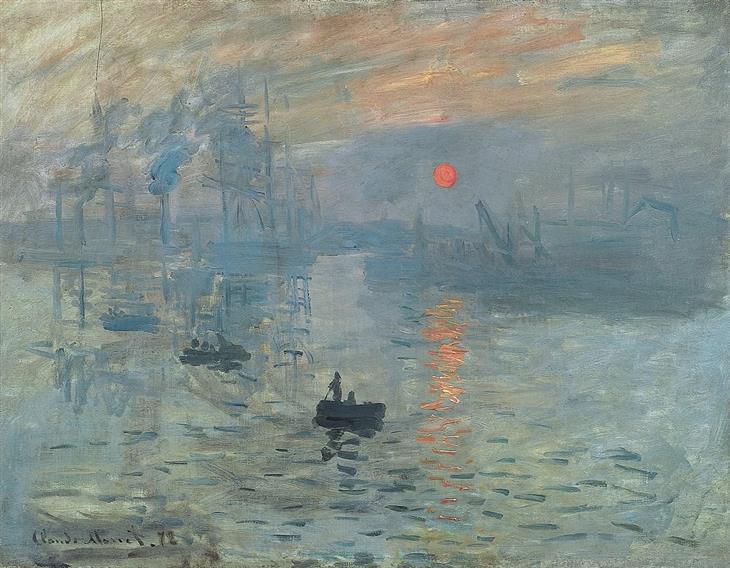Famous French painters have become the hallmark of French culture as we know it today, and this is partly because the history of painting in France is rich and long, as the French rulers encouraged and nurtured all areas of art. French painting developed from earliest Roman frescoes, medieval Gothic painting, stained glass, and trends that came from Italy during the Renaissance, with French Baroque painting reaching its peak in the late 17th century, followed by the Rococo style in the 18th century. Since then, France has become a center of great artists known to everyone, and among all the talented ones we have chosen to focus on 5 who really show the incarnation of the art of painting in their lives and works, and are considered key figures in French art. Come discover them, and through their works also the history and development of modern French art.
1. Edouard Manet - the father of Impressionism (1832-1883
lthough he was a controversial artist, Manet was very significant for an entire generation of French artists, and it can even be said that his works formed the basis for the development of the Impressionism movement, which we will touch on in detail later. Manet has a number of artistic characteristics that are repeated in his paintings
- Flattening: the painting is usually in a solid color (influenced by Japanese woodcuts).
- Extreme contrasts of light and shadow: until Mane's time it was customary to draw gradual shadows.
- Cropped Composition: This style is inspired by the invention of the camera.
- Strong lighting: Mane really likes to incorporate strong and clear light into his paintings.

One of his most famous paintings is Olympia, in which a prostitute appears with a facial expression that indicates self-confidence and shamelessness. The painting caused a great scandal and controversy, but according to Mane it is a paraphrase of the painting Venus of Urbino by the Italian painter Titian. Unlike the original painting however, Manet's painting had many signs of sexuality, including the orchids, the upturned hair, the black cat and the bouquet of flowers. Here are the two paintings side by side - the upper one by Manet, and the lower one by Titian.
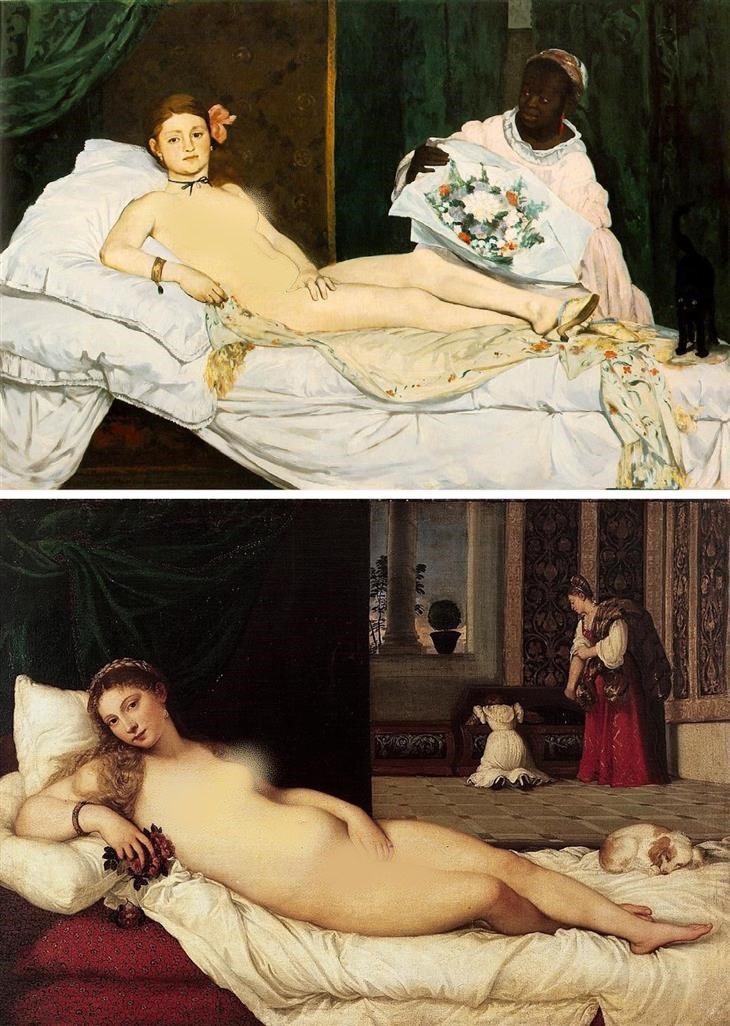 This is not his only painting that was rejected by the community of artists and the public, but the government supported him, and therefore he continued to work and paint until his 40s, when he contracted syphilis and rheumatism, which caused his death. The last painting he was able to paint before his imminent death is "The Bar at Polly Berger", and in it you can literally see the sadness of his last days under the bored expression of the barmaid, who, although she is surrounded by lights (a sign of progress and modernity), is distant and distracted.
This is not his only painting that was rejected by the community of artists and the public, but the government supported him, and therefore he continued to work and paint until his 40s, when he contracted syphilis and rheumatism, which caused his death. The last painting he was able to paint before his imminent death is "The Bar at Polly Berger", and in it you can literally see the sadness of his last days under the bored expression of the barmaid, who, although she is surrounded by lights (a sign of progress and modernity), is distant and distracted.

2. Claude Monet - Master of light and color (1840-1926
Monet, like Manet, was one of the founders and leaders of the Impressionism movement - an artistic movement that was widespread in Europe and especially in Paris in the 19th century and influenced not only the visual arts, but also music and literature. The name of the movement comes from Monet's painting - "Impression, Soleil" - in which a seascape is depicted in the port of Le Havre in northern France.
Monet used to paint mainly rural and urban landscapes, and he tried to imitate the way the eye perceives what it sees. His technique combined quick color drawing with short, full color brushstrokes, including the use of complementary colors. His main goal was to show how the object changes depending on the light and the weather, so he created a series of photos of landscapes in different lighting and weather conditions, such as "haystacks".
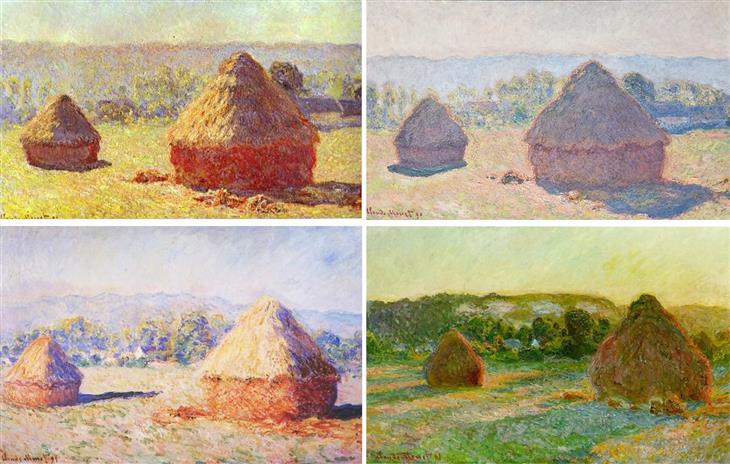
In 1883 Mona rented a piece of marshy land in Giverny, which he finally bought and moved there with his family. He cultivated the plot and turned it into a water garden in the style of Japanese gardens, among other things so that he would have new motifs for painting. On the banks of the lake he planted alder trees, willows, irises and bamboo canes, and he covered the surface of the water with exotic nymphaea plants. There he painted for over 25 years some of his most famous paintings, such as the series of water lilies and the painting in front of you - "The Bridge, Harmony in Green".
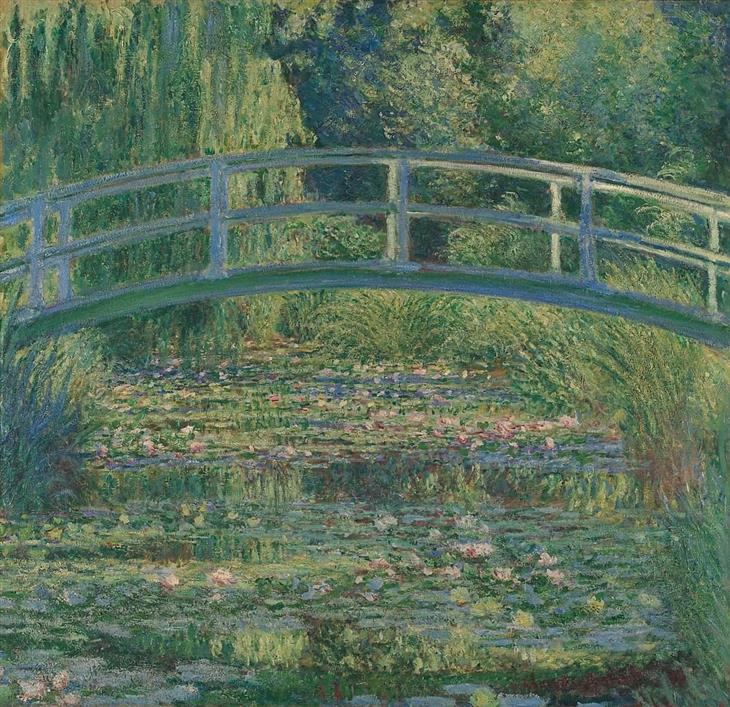
3. Paul Cezanne (1839-1906) – the founder of modern art
Cezanne was one of the greatest post-impressionist artists, and he had a great influence on the development of art in the 20th century and especially on the Cubism movement, even though he was not a Cubist himself. He painted a lot of portraits, landscape paintings and still life, and in almost every one of his works you can see a kind of prophecy for the art movements that would come in the years to come. Contrary to the "light and shadow" method that was practiced in his time, Cézanne placed more emphasis on perspective, and you can see examples of this in the series of landscape paintings in the village of L'Estec
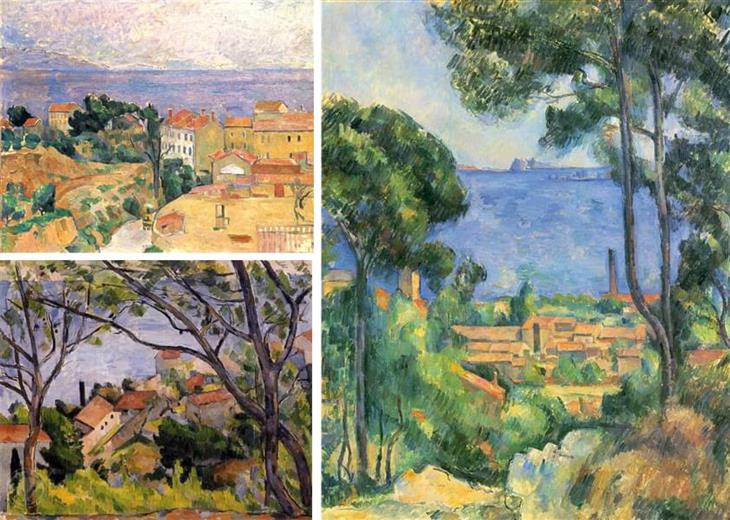
Over the years, Cézanne studied composition in art in depth, and created a large number of paintings that are considered seminal in the history of art. His late style strove to produce the essence of the painting's object, in contrast to impressionism, and as a result he had a great influence on the cubist movement and abstract painting. You can see this in the painting "Lake Annecy", which is not considered Cubist, but has touches of the style, and this even before it was created.
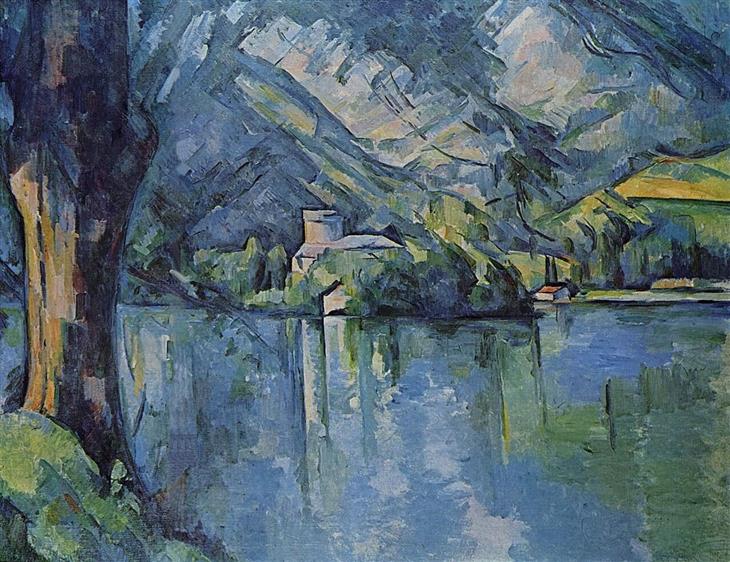
One stormy day Cezanne was working in his garden, and after two hours he decided to return home, but collapsed on the way and lost consciousness. When he was taken to his home by passers-by, it was discovered that he was suffering from hypothermia, and he had severe pneumonia. The next day he went out to his garden again to work on his last painting, "The Gardener and Eliya", but he fainted again, and the same gardener and Eliya called for help, but the painter died not long after.
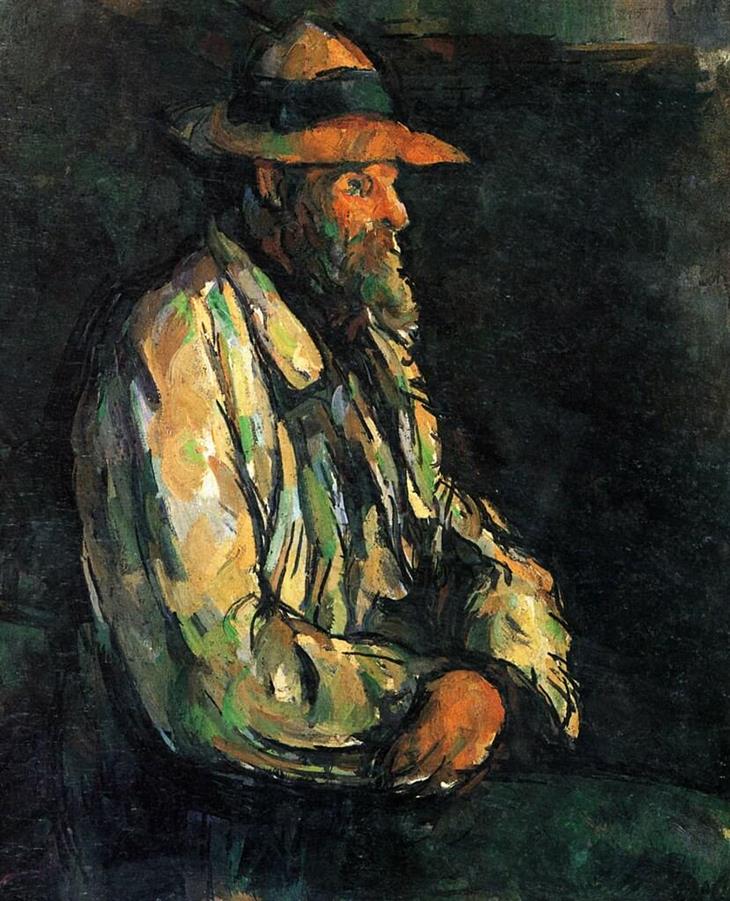
4. Georges-Pierre Serra - the inventor of pointillism (1859-1891
Although his life was short, Georges Serre was one of the most important painters in France, since he invented the technique of "pointillism" - a method of covering the picture with dots ("foun" in French) and isolated spots of color. The points all come together in the human eye for the landscape and the figures, with no brushstrokes and no lines at all, and this method of painting was innovative like no other around him.

Serra is actually considered the artist who started the neo-impressionist movement, when the clearest and most striking example of this can be seen in the painting "Sunday afternoon on the shores of the island of La Grande Jatte". It took Serra two years to finish the painting, in his first stage he painted it with impressionistic techniques, while in the second stage he added the dots. When the painting became famous, it was a huge inspiration for many post-impressionist painters, including Claude Monet and Vincent van Gogh.
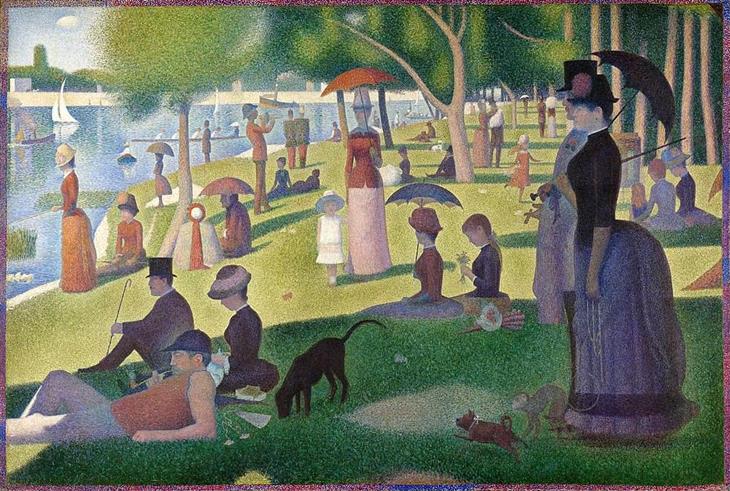
Serra died at the age of 31 for reasons that are completely unknown, and he did not have time to complete his last work - "The Circus". Nevertheless, the painting is currently displayed in the Musée d'Orsay in Paris as it remained at his death. Critics said the painting was too stiff and that the people in it looked like mechanical dolls, but others saw it as a forerunner of the Cubism movement.
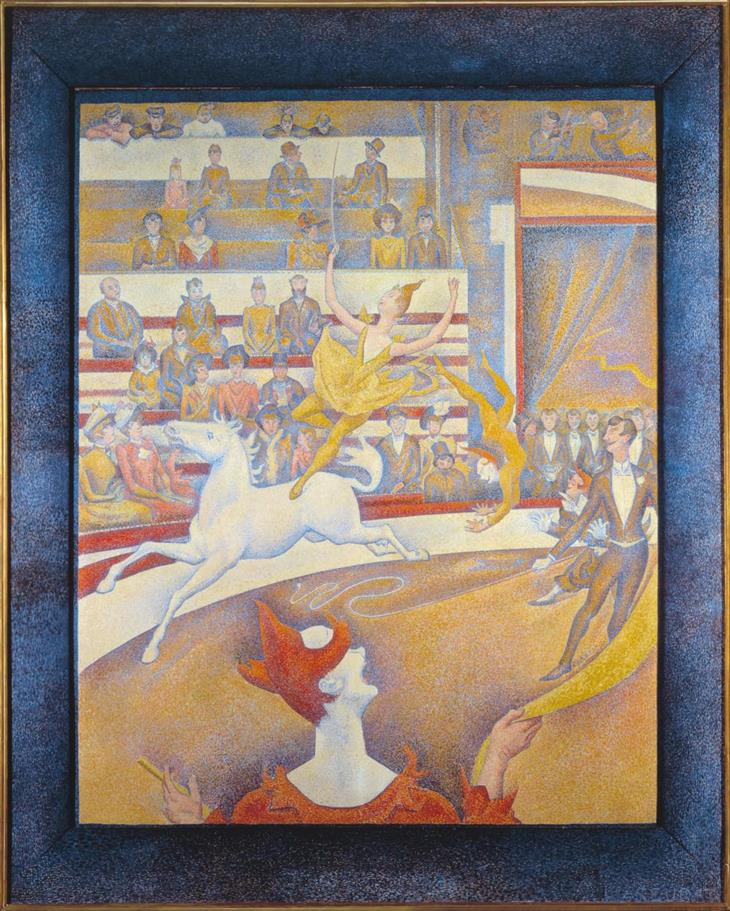
5. Georges Braque - the pioneer of Cubism (1882-1963
Although the best known of cubist art is Pablo Picasso, he did not do it alone, but together with Georges Braque. When Braque moved to Paris, he was exposed to the Impressionist movement and drew a lot of inspiration from it, but slowly moved to create works in the spirit of Fauvism - an artistic movement that had a very short life, which was characterized by the use of pure colors that came directly from the tube, without mixing. An example of this can be seen in his work - "Olive tree near L'Estek". It is said that Braque was the last to join the Fauvism movement and the first to leave it
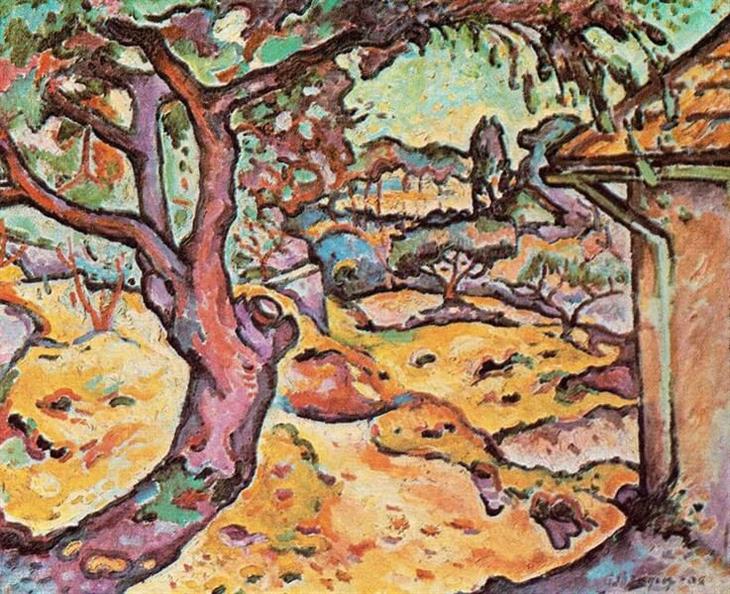
Braque met Picasso in 1907 and was very impressed by his works. The two became friends with close personal relationships and great respect for each other, and together they made several artistic breakthroughs thanks to conclusions they reached from discussions, mainly about the works of Paul Cezanne. Together they founded the Cubism movement, and an example of such a dialogue can be seen in Braque's work "The Large Nude" (right), which was a kind of response to Picasso's "Misses of Avignon" (left).
he two's paths diverged when Braque was drafted into World War I, where he was seriously wounded and returned to painting only in 1917 after months of hospitalization and recovery. In these months he began to reflect on the meaning of his work, and over the years he abandoned cubism for a more personal and unique style, which, unlike the cubist style he developed, is more characterized by bright colors. At the end of his life, Braque mainly painted still lifes, and in particular birds, when the piece "Two Birds" was a large ceiling painting commissioned from him for the Louvre Museum.





